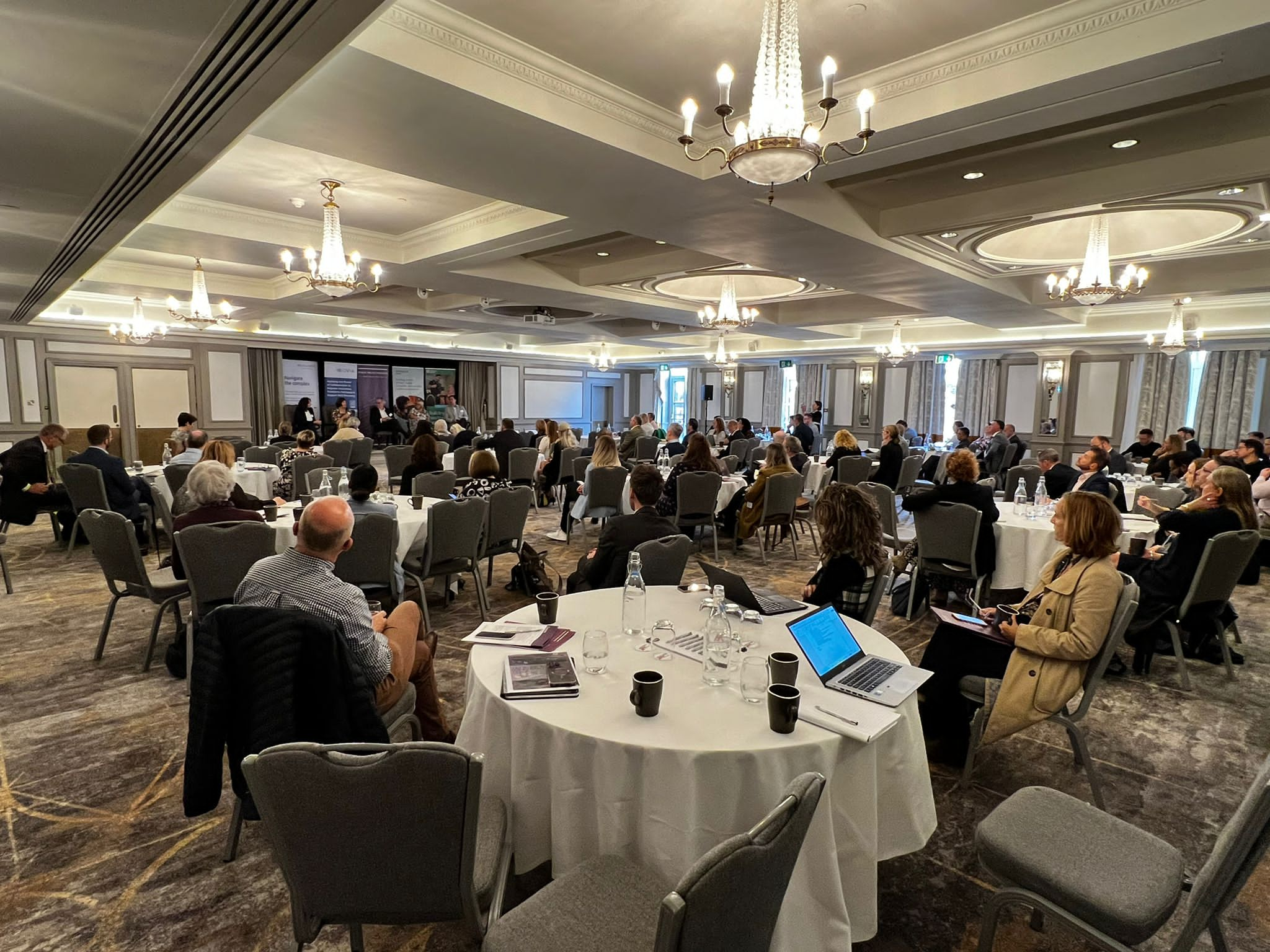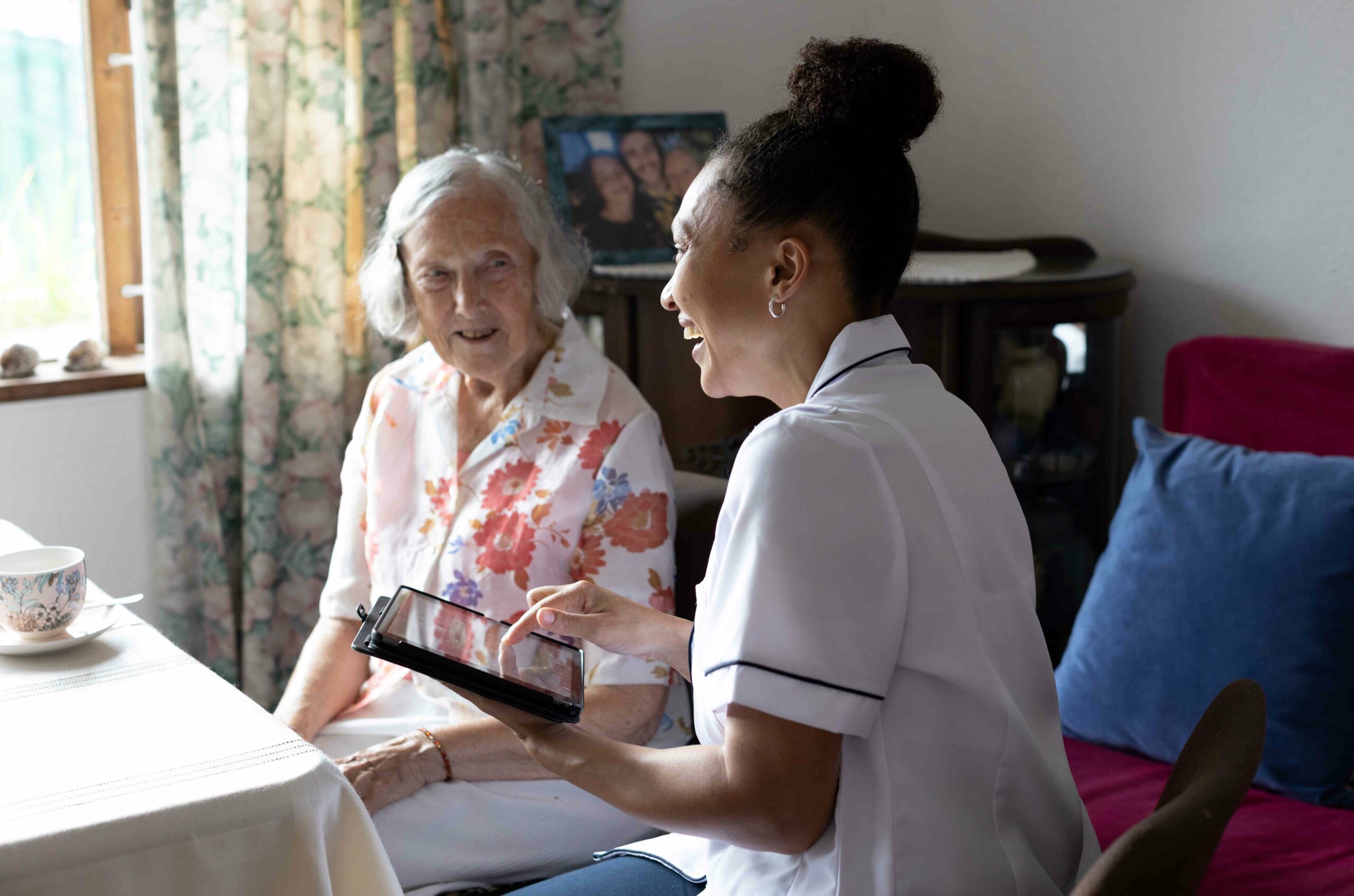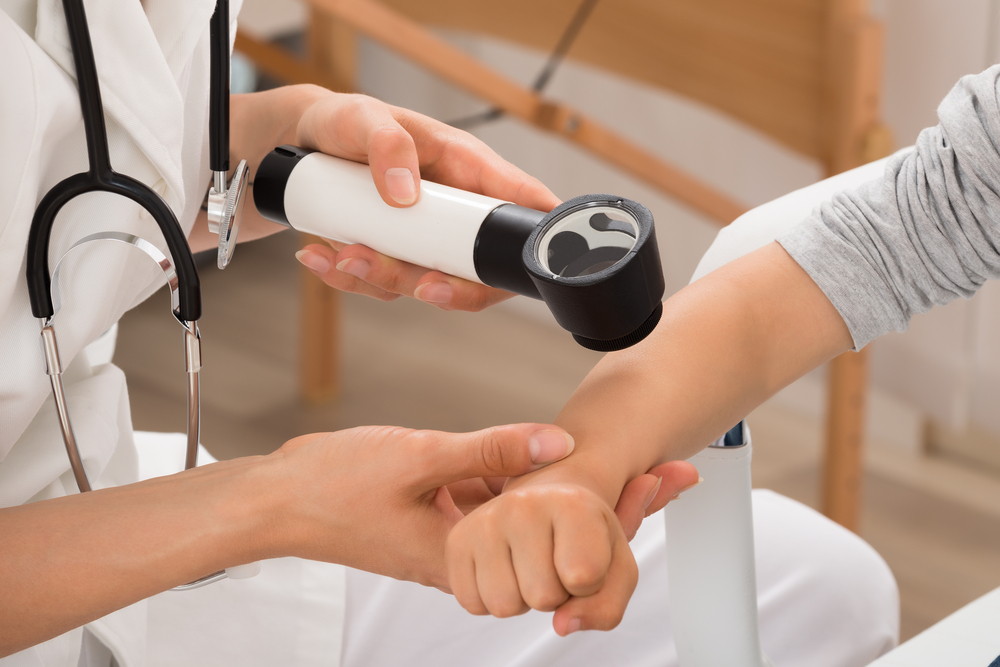On 4th October 2023, Public Policy Projects welcomed health and care leaders from across the south west for the South West ICS Delivery Forum to debate and discuss the key challenges the region is facing in the delivery of integrated care.
With an ageing and largely rural population, and the close juxtaposition of affluent and highly deprived areas, the South West of England faces some unique challenges in the delivery of integrated care. Introducing the day’s discussions, Public Policy Projects’ (PPP) Chair, Stephen Dorrell, remarked that the introduction of ICSs represents the biggest opportunity to transform healthcare delivery in living memory. The consensus around ICSs is somewhat unique, as for the first time possibly ever, a major NHS reform is not the subject of intense party-political argument. How ICSs make use of this opportunity will shape health outcomes for generations to come.
To discuss the unique challenges the South West faces, and share examples of meaningful work that are shaping better outcomes for the region’s population, PPP’s South West ICS Delivery Forum brought together health and care leaders from across the region. Central to these discussions were the importance of collaboration, the need for system-level data strategies, and how ICSs can harness all assets at their disposal to improve population health and reduce health inequalities.
Keynote address
By virtue of his decades’ experience in the police service, Stephen Dorrell introduced Dr Jeff Farrar as “the embodiment of the principle that if we want to deliver better health outcomes, we need to begin by bringing together the different elements of local public services.” The former Chief Constable of Gwent Police invoked this experience during his keynote speech, explaining that despite the long-standing consensus that “collaborative services are the way to proceed,” public sector organisations have historically reverted to their old ways. Farrar, who now chairs Bristol, North Somerset and South Gloucestershire (BNSSG), identified a lack of visibility between different parts of the system as a key reason for this.
“The opportunity to get things done in the locality will give huge rewards.”
Dr Jeff Farrar, Chair, Bristol, North Somerset and South Gloucestershire ICB
In an effort to improve communication and collaboration across the system, BNSSG ICB has recently launched a review of its governance structures. The goal of this review is to ensure that the different elements of the system, such as the integrated care partnership (ICP), the ICB, and locality partnerships, have oversight of each other’s work and can align their services to enhance their value and reduce duplication of efforts. Farrar added that the majority of lean continuous improvement and systems thinking has historically taken place within, not across, organisations, and stated his conviction “that if we do that more scientifically this year, we will improve our services and stop duplication of effort in the system.”
Farrar also praised what he referred to as “the jewel in the crown” of integrated care – the possibility to think about and enact reform from the bottom-up, rather than imposing it from the top. “The opportunity to get things done in the locality will give huge rewards,” argued Farrar, “but it needs a little bit of time.”
Developing partnerships – don’t shirk the hard conversations
When discussing partnerships or collaboration, it can be tempting to think in terms of agreement; if organisations are collaborating, they probably have areas of common agreement. Earlier, Jeff Farrar alluded to sitting in rooms in which there is “violent agreement” that integrated services are a good thing, but subsequently, nothing has meaningfully changed. These are the easier conversations that do not tend to include agreement over the more difficult, controversial or intractable problems. They also do not account for what happens when things go wrong.
And as multiple participants remarked, ICSs are hardly operating in an environment that can be described as optimal. While the 30 per cent reduction in operating costs that ICBs must deliver by 2025/26 limits the scope of transformation, it simultaneously makes such efforts – and effective collaboration – all the more important.1 “Obviously, funding is a major factor,” confirmed Mills & Reeve Partner, Rhian Vandrill, “but over time we’ve come to see a genuine realisation that some of the benefits of being able to share workforce and resource over a collaboration can bring benefits to the individual organisations as well as the collaborative.”
If ICSs are to achieve their goals in a straightened economic environment, effective partnerships with the voluntary, charitable and independent sectors will be especially crucial. Although upending long-held consensus about how and where money should be spent will be a difficult process, as Chief Commercial Officer at Nuffield Health, James Murray, noted, “partnerships should be hard. Sometimes you have to fall out and have these conversations and take a leap of faith about what you do and don’t do in the system. With the independent and third sectors, there are massive resources that could add huge weight to what we do and don’t do. It’s going to require leadership and being brave, but I hope that there’s the opportunity within the new ICBs do be able to do that.
“The lessons learnt at the locality level have to have a clear route to the strategic level.”
Cllr Helen Holland, Chair, Bristol, South North Somerset and and South Gloucester Integrated Care Partnership
Vandrill summarised the position succinctly, saying “don’t make an agreement that’s going to be broken. Sometimes you need to air difficult subjects to create an agreement that you all buy in to.
Despite Bristol City Council losing 60 per cent of its funding since 2010, Bristol Health and Wellbeing Board’s Chair Cllr Helen Holland, who also chairs the BNSSG Integrated Care Partnership, remarked that “there is a lot of money in the system. But we’ve been spending a lot of money doing the wrong thing.” Leveraging what Cllr Holland referred to as one of the “jewels in the crown” of ICSs – the role of the voluntary sector – will enable ICSs to develop more cost-effective, bottom-up strategies that take into account population needs, as well as the plethora of resources at the disposal of each system. Holland explained that she regularly produces the BNSSG ICP strategy at meetings, saying that “any organisation doing anything, even the bus company, can look at this and see that they have a role” in the delivering the aims of the system.
Ros Cox, Associate Director of Partnerships at BNSSG ICB, stressed that the presence of the voluntary sector in the ICSs locality partnerships has enabled these places a greater on-the-ground visibility of gaps in the system when it comes to community mental health provision. The integrated care teams that were created thanks to this insight include voluntary sector providers and “have been a huge success in each of our locality partnerships,” said Cox. Not only are these partnerships enabling services now, they are key to informing future policy; “The lessons learnt at the locality level have to have a clear route to the strategic level,” said Holland. As such, “the next iteration of the strategy should look different because it will have been informed by the work of locality partnerships now.
Harnessing pharmacy to revamp patient pathways
It is increasingly being recognised that pharmacy as an asset has been underutilised in healthcare delivery. A slew of recent policy recommendations from both government and the sector itself have focused on the need to expand the role of pharmacy to relieve pressure on general practice and secondary care.2,3,4,5 As ICSs mature and the scale of their challenge comes into focus, it is becoming ever clearer that they will need to harness all of the tools at their disposal if they are to achieve their ambitions. One of the biggest assets that ICSs have is pharmacy. The expanded role the sector assumed during the Covid-19 pandemic is testament to pharmacy’s ability to reach parts of the population that other sectors cannot. However, during this panel, speakers identified a number of barriers holding back the potential of pharmacy and preventing it from become a true partner in the delivery of integrated care.
For pharmacy to be an effectively integrated, it must be integrated digitally with the rest of the system. Peter Fee, Lead Clinical Pharmacist at Taunton Central PCN, remarked that generally, “community pharmacy is quite isolated in its access to the clinical systems”. Pharmacies that do have access to patient records (usually as a result of being owned by the GP practices to which they are attached), “can have a huge impact on patient care”, so establishing a means of granting this access securely should be a priority for all ICSs. Aside from the implications on patient care, this will help to lubricate the joints between pharmacy and general practice in particular, saving the time of GPs and pharmacists and enabling them to focus on better patient care.
Only by granting this visibility can pharmacy then be empowered to act on its findings and physically provide patient care. An example of this is hypertension case-finding, which was commissioned in 2021 as a means of identifying and preventing cardiovascular disease (CVD).6 CVD is a major driver of health inequalities, comprising around 25 per cent of the life expectancy gap between rich and poor populations in England. As such, the hypertension case-finding service could be a tangible and impactful way for ICSs to target and reduce health inequalities, in line with the CORE20Plus5 approach.7
“National contracts are starting to move towards helping those different players work together better.”
Kyle Hepburn, Clinical Director and Lead Clinical Pharmacist, North Sedgemoor PCN
Kyle Hepburn, Clinical Director and Lead Clinical Pharmacist at North Sedgemoor PCN said, however, that all the service presently does “is highlight that a person has hypertension – we can’t complete the episode of care because we can’t currently prescribe in community pharmacy. There are 50,000 people in Somerset alone walking around with undiagnosed hypertension, and current primary care capacity can’t handle that. We’re finding more hypertension cases, but who’s going to pick that up?”
Asking community pharmacy to undertake hypertension case-finding is undoubtedly a positive step towards better prevention of CVD, but if a pharmacist is unable to complete the episode of care, this does little to reduce pressure on primary care – although it may do for secondary care further down the line. Pharmacy needs to be empowered to act on its findings, and the drive towards increasing the numbers of independent prescribers is a good step in this direction.
Interface Clinical Services’ Associate Director, Service Development, Laura Siepker, gave an insight into how pharmacy can support prevention when properly resourced and empowered to manage long-term conditions. Chronic pulmonary obstructive disease (COPD) often interacts with CVD and accounts for more than one million NHS bed days and 140,000 admissions per year, and is projected to cost the health service £2.3 billion per year by 2030. Interface Clinical Services delivers 23,000 days of clinical support into primary care each year, said Siepker, and in the last year, “has delivered over 9,000 COPD clinics over the country to more than 110,000 high-risk patients. Many of those patients will not progress into secondary care, and we’re proud to say that we’ve hopefully avoided around 150 deaths doing this.”
On a positive note, Fee remarked that a recent ICS key stakeholder event attended by representatives from all four pillars of primary care, as well as other members of the ICS, was the first time he had seen so many senior stakeholders in one room “to discuss aligning how they work for the betterment of patients and getting away from the combative mindset that has always been prevalent in primary care”. Kyle Hepburn added that “now, national contracts are starting to move towards helping those different players work together better”, all of which suggests that the dial is shifting in the right direction as ICSs continue their development.
Developing system-level approaches to data
ICSs are bringing with them new appreciation of harnessing data assets to drive not just technology strategies, but to inform all parts of healthcare delivery. A crucial aspect of this new environment is the greater emphasis on population health management (PHM). As Deborah El-Sayed, who is Chief Digital Information Officer at BNSSG ICB, explained, technological advances have created the ability to “address the entirety of the health and wellbeing of people, communities, populations or system,” but enabling this shift requires changes in how data is used at the system level.
This means data providing intelligence, “helping us to understand if we are making the right decisions and spending money in the right place”. El-Sayed continued: “It’s less about activity levels or how many beds we’ve got. Those things remain important, as there’s still a need for the Treasury to know where the money’s gone. But it’s now more about the interconnectedness of the data, what’s happening between organisations and what’s happening in the PHM space. We’re now starting to look at different areas like people’s behaviour, adherence to prevention, approaches to healthy lifestyles, etc.”
“We should have a more MDT approach because then the data people are in the room earlier on in discussions.”
Sarah Blundell. Analytical Development Lead, Analytics Unit, NHSX
However, there are still barriers preventing ICSs from truly developing system-level approaches to data. For Sarah Blundell, Analytical Development Lead, Analytics Unit at NHSX, “the biggest challenge is now around the workforce, not necessarily technology. We may have to pay for it and integrate it, but it is no longer the blocker it used to be. The challenge we now have in data and analytics is there aren’t enough of us who have skills in using, understanding and analysing data. We have a supply and demand problem across all of our data and technology areas in the NHS.”
To make the most of data at the system level, data literacy needs to be improved and embedded at virtually every level of the NHS. This is because data only paints part of the picture and will only enhance services if it is paired with the right understanding of how to use this data to inform strategy and decision-making. “This means not only employing more data and analytics staff, but also improving the data literacy of everybody in our workforce, including the people that are inputting information into the systems.”
Improving data literacy throughout the NHS must also include embedding these skills within multidisciplinary teams (MDTs). Blundell added: “We should have a more MDT approach because then the data people are in the room earlier on in discussions. Through that closer joint working, you then have a better transfer of data skills to people that are making these decisions. We need to stop divorcing [data] and embed data staff into actual programmes. At the moment, clinicians and managers might not be asking the right questions.”
Until data input automation becomes the norm, embedding this expertise will also help to improve data quality, as “I could build you the most sophisticated neural network you’ve ever seen, but if the data coming in is rubbish, the decision making just won’t be there,” Blundell remarked. Similarly, automation will reduce the burden on clinicians. El-Sayed added that “we need systems that, almost as a by-product of delivering a service to a patient, can actually capture data in sophisticated ways that mean we haven’t got this human burden.”
An example of how comprehensive, longitudinal data analysis is enhancing ICSs’ system-level understanding was provided by Oracle Health’s Director of Consulting Services, Charlie Evans. Evans is responsible for delivering Oracle data platforms into ICSs, including PHM platforms that integrate real-time data from acute, primary and community health settings, and increasingly, housing data. In North Central London ICS, data from these sources is combined with elective recovery waiting lists, using MDTs to “look across all of the pathways and establish how they can work better with these patients.” This includes some innovative work, including “looking at if there are any carers waiting for surgery and asking if we can bring their care forward, so that they can look after the person they care for in a better way.” Evans confirmed that in South London ICS, this and similar approaches have led to a “reduction in waiting times of around 11 per cent, which is a really massive reduction there.”
Addressing health inequalities in the South West
ICSs are well-positioned to identify and address the root causes of health inequalities, in that these causes often stem from factors outside of the health system’s control. As such, ICS’s ability to mobilise, engage and coordinate a wide range of public services makes it possible to develop holistic strategies that can address these wider determinants of health.
They are also well-equipped to take on health inequalities due to their intrinsically local focus. “You can’t think about health inequalities without thinking about ‘place’”, began Andrea Beacham, who is Senior Programmes Manager for Health Inequalities at Northern Devon Healthcare NHS Trust. “That’s because the characteristics of the populations we serve are so heavily influenced by the places they live,” that developing a meaningful understanding of the causes of health inequalities is almost impossible without first understanding the specific interplay of “independent and mutually reinforcing” factors that is unique to each ‘place’ in each system.
“We’ve been working at solutions that have actually been identified in the community.”
Jonathan Higman, Chief Executive, Somerset ICB
Specifically in Northern Devon, there are “huge disparities between the affluent and non-affluent areas which, because we work in averages, can obscure the depths of the deprivation we’ve got. So we often don’t quality for things like the levelling up fund, because our whole area on average isn’t too bad.” This provides another reason why data alone cannot be relied upon, and must be supplemented with local insight.
Local networks, such as PCNs, make for an ideal means of gathering this insight, “not because of PCNs themselves,” said the Chief Executive of Somerset ICB, Jonathan Higman, “but because of the footprint that PCNs service and the ability to have neighbourhoods with integrated teams from primary care, the voluntary sector, education and transport, all coming together to solve local issues.” This capability has enabled the Somerset ICS to understand and begin to address inequalities that previously were more opaque and intractable, such as among the farming community. “We’ve been working at solutions that have actually been identified by the community,” Higman explained, “and we now do things like taking health checks out to farmers’ markets, targeting that community with lots of preventative work.”
This example demonstrates that, to be effective, action on health inequalities needs to be proactive, targeted and rooted in local insight, which means listening to people and understanding their unique circumstances. Dr Jim Forrer, a GP and Director of Population Health at Optum offered another example as he related the story of a woman with learning disabilities who had missed three ophthalmology appointments and, in line with procedure, was about to be struck off the waiting list. “A quick phone call revealed that her husband also had learning disabilities and they both found the thought of going to hospital too overwhelming,” Forrer explained. “And so, we arranged voluntary transport, had somebody meet them at the hospital entrance, take them to the outpatients’ department and stay with them. Ultimately, this woman got the care she deserved with a bit of support and outreach, and a different approach.”
Although noting that volunteering services “can be very clearly linked to a reduction in health inequalities,” the Royal Voluntary Service’s Head of Business Development, Duncan MacLeod, used his address to touch on the benefits that volunteering can offer to volunteers themselves. Alongside keeping service users connected to health, community and social prescribing services, McLeod cited a London School of Commerce evaluation of the Volunteer Responders programme, which identified that volunteering provides the “double bonus” of fostering feelings of greater wellbeing and social connectedness among the volunteers themselves. The Volunteer Responders programme was established in March 2020 to support clinically vulnerable people who were shielding from Covid-19. The same report also highlighted the cost-effectiveness of volunteering, finding that each volunteer/client interaction in the programme generated social value of approximately £500.
Conclusion













